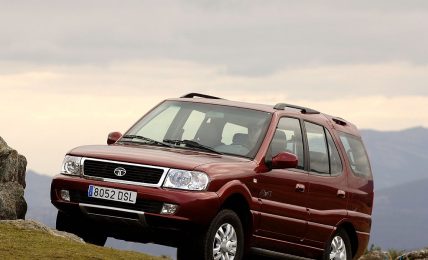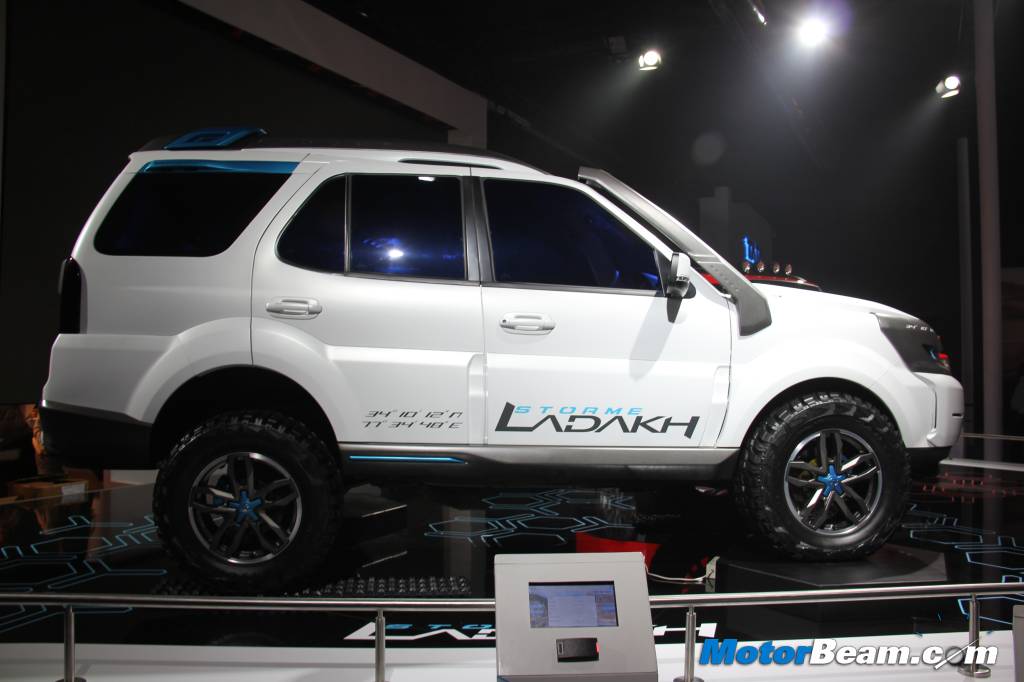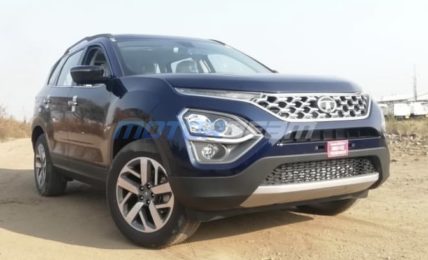When compared to the Fortuner, the Safari look similar in size
Tata also made huge cuts in service costs of the facelifted Safari Storme. Rear axle oil, auxiliary drive belt and engine vacuum hose no longer require any replacement for the lifetime of the vehicle. Also, power steering oil, engine oil and wheel alignment service intervals have been increased by 30 percent. The new fuel filter also comes with better life. So all in all you get a much more reliable Safari these days which is super easy to maintain and more practical to drive on a daily basis. Sadly, Tata didn’t highlight and promote these improvements enough in the market for the buyers to change their preconceived notions about the Safari being unreliable and heavy on the pocket. Our desi junta only knows that the Storme facelift comes with a new grille and steering wheel while the additions on the V400 version include a fender badge and more torque. That’s not it guys!
The Safari is a good mix of comfort and off-road ability
The Storme Varicor 400 can easily smoke most of the compact SUVs that are much lighter
The 320 Nm engine had adequate performance on tap and it never felt underpowered. The Varicor 400 takes the performance to the next level though. There is no dearth of torque, the mid-range is so strong that you can easily perform a burnout or a power drift on a loose surface. The way it pulls this hefty SUV is amazing, the oil burner just doesn’t give up until the redline. However, I noticed a tad more turbo lag under 2000 RPM compared to the regular engine.
Remember the aerial shots of the Audi R8? This is how it happened
What I really missed with the 320 Nm engine was the additional 6th gear for better cruising on the highways. This has now been addressed with the V400 and the additional gear is a boon to munch miles on the highways. However, I feel the new gearbox is relatively notchy than the 5-speed unit. This is the same 6-speed manual gearbox used in the Hexa, which has a similar notchy feel to it. Also, the gear ratios are a bit absurd. The first gear is short and sedate but as soon as you shift to second you get a kick while third onwards the gearing is long. You need to get the hang of it to smoothen out the shifts.
The beast is always ready to shift houses with massive luggage capacity
The Safari doesn’t feel underpowered in spite of being quite a heavy weight SUV
What makes me fall in love with the Safari is the road presence, driving position and the suspension setup. You sit high up like a maharaja with a fantastic view around, you don’t feel claustrophobic when stuck in traffic. The intimidating size doesn’t let those Olas and Ubers (the most impatient drivers) cut your lane and even the toll booth guys think twice before asking for toll with that powerful presence. You can just glide over the biggest potholes as the rugged suspension can take anything in its stride. The Safari is also the king of off-road in its segment since it’s the only one having limited slip differential for those extreme terrains.
The service costs have been cut drastically from the pre-facelift model
Tata Safari Storme Service Costs
1. Service Schedule – 10,000 kms/6 months (whichever is earlier)
2. Cost of Service per 1,00,000 Km – Rs. 65,000/-
3. Cost of Spares –
* Engine Oil Per Service – Rs. 2467/-
* Brake Oil – Rs. 230/-
* Oil Filter – Rs. 234/-
* Fuel Filter – Rs. 2132/-
* Brake Pads (Front) – Rs. 3386/-
* Rear Brake Lining – Rs. 4496/-
* Front Bumper (without painting) – Rs. 5179/-
* Rear Bumper (without painting) – Rs. 6703/-
* Headlamp Assembly (Each) – Rs. 8839/-
* Tail Lamp Assembly (Each) – Rs. 1629/-




